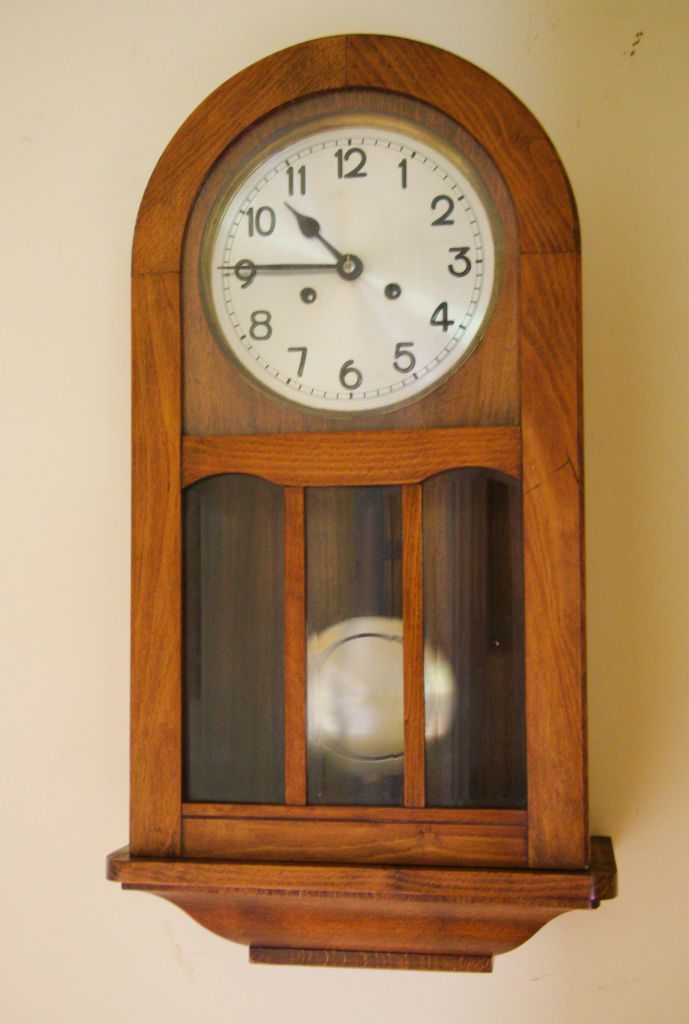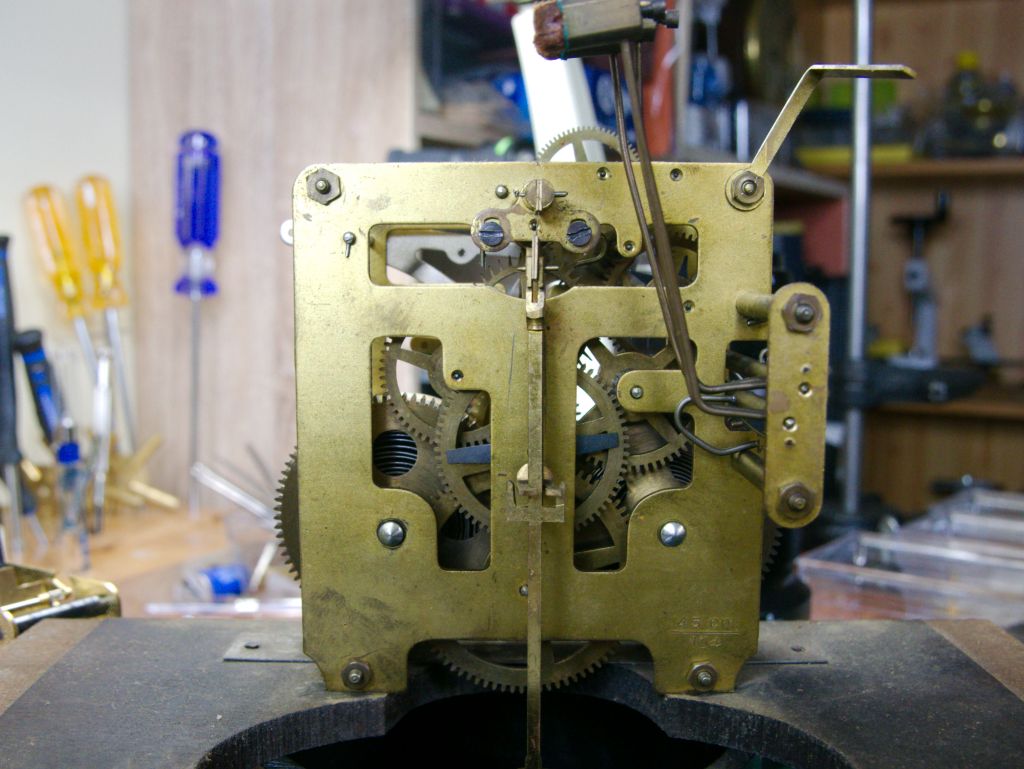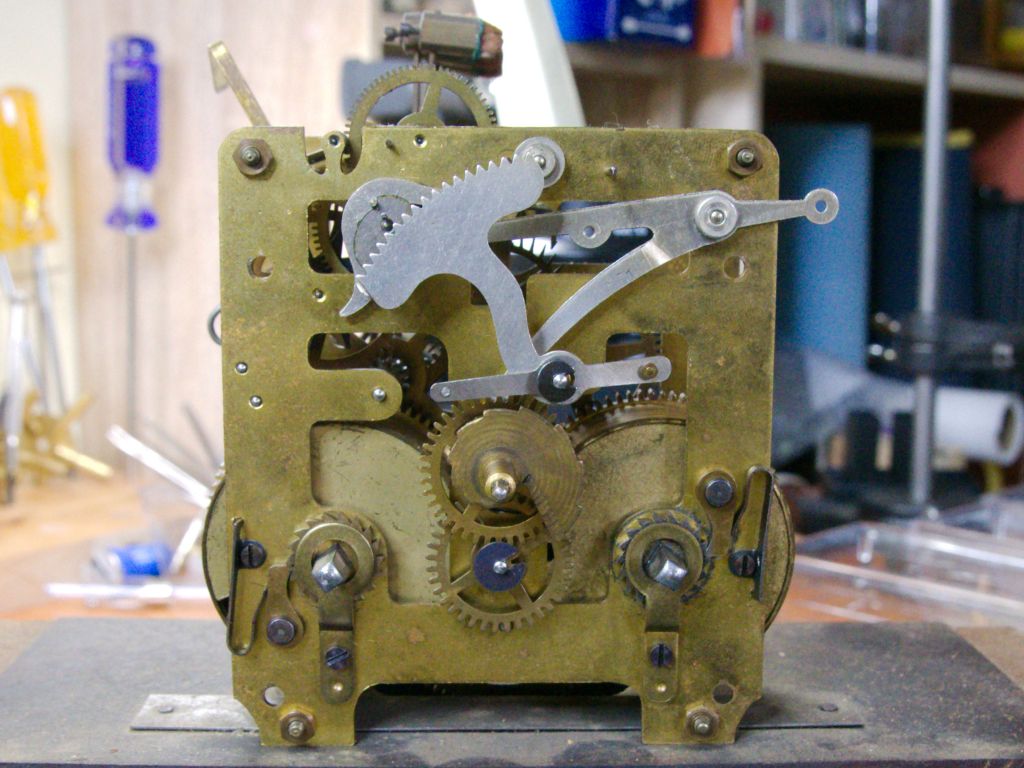Kienzle might not ring a bell for many clock enthusiasts, but it was a major German producer of clocks for the general public.
Kienzle Uhren GmbH, was founded in 1822 by Johannes Schlenker in Schwenningen, in Black Forest region. Jakob Kienzle joined the family by marriage in 1883 and became the sole owner in 1897. He revolutionized clock production through mass production, leading to significant expansion. By 1939, the company employed over 3,500 people and produced around 5 million clocks annually. Kienzle eventually transitioned to wristwatch production and continues to operate as a watchmaker.

This Kienzle wall clock was bought at auction in 2021. It was my second Kienzle, the first, an attractive desk clock from the early 1950s. But in general, I was unfamiliar with the maker. I later learned that the clock was missing some details: a case decoration above the number 12, both standoffs and the pendulum rod retainer was broken. However, the case itself is in relatively good condition.
The time and strike movement in this round top box clock is compact, with a 43 cm pendulum length and a beat rate of 104 per minute.

I serviced this movement in 2021 shortly after acquiring it. At the time I found It exhibited typical wear for its age, with the time side running relatively freely and the strike side being somewhat sluggish. After disassembly, an assessment revealed that the movement required 10 bushings: 6 on the backplate and 4 on the front. The work was completed without issues, the movement was reassembled and tested and the clock ran reliably until this year.

Now it has stopped. In short, I’m not entirely sure what caused it to stop.
Suspecting a power issue, I removed the movement from its case and took off the hands and dial face. I also let the mainsprings down but left enough tension to supply power. I unscrewed the crutch bridge to remove the pallets which allowed the escape wheel to run freely. So, not a power issue. I continued to inspect the wheels and pinions and found nothing amiss. While out of the case, I re-oiled the movement.
The issue seems to be with the time-side mainspring. Looking back at my notes, I serviced both mainsprings in 2021 and didn’t observe anything unusual about them at the time.
However, I’ve noticed that if I fully wind the time side, the clock is reluctant to start. This issue has happened more than once. Releasing the tension of the time-side mainspring with a wind-down key allows the movement to start running again. If I don’t wind the time side mainspring completely, the clock seems to run without any problems.
I can only conclude that I did not clean the mainsprings as thoroughly as I should have. Residual dirt and grime on the inner part of the coil seem to cause the spring to seize when wound tightly. In the meantime, the solution is not to wind the time-side mainspring fully.
Unfortunately, the mainspring barrels cannot be removed separately as in the case of some German movements, necessitating the complete disassembly of the movement to replace/inspect the mainsprings in case of an issue. If it were feasible to remove the mainspring barrel independently, I would have taken the opportunity to remove the mainspring from the barrel and clean it more thoroughly.

I am not about to disassemble the clock again as I have more pressing projects on the go but in the meantime, it will run as long as I do not wind the time-side spring too tightly.
Discover more from Antique and Vintage Clocks
Subscribe to get the latest posts sent to your email.

A great trouble shooting diagnosis. Ironic. More power to the mainspring loses power.
LikeLike
Thank you.
LikeLike